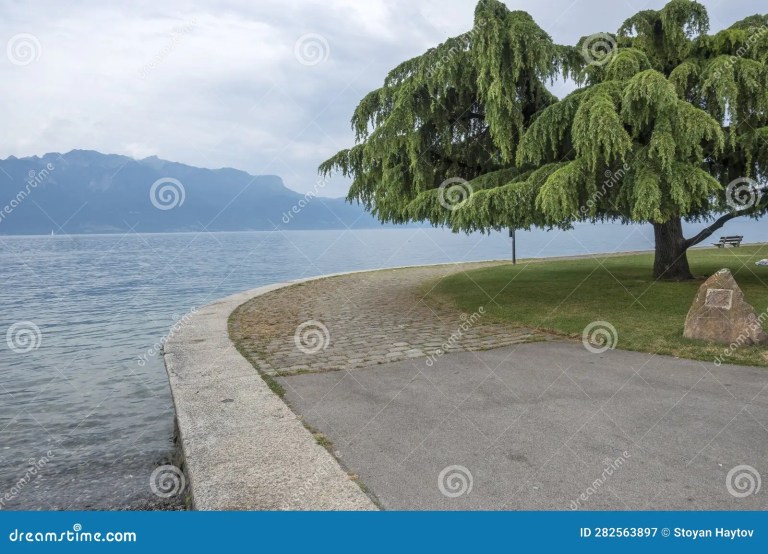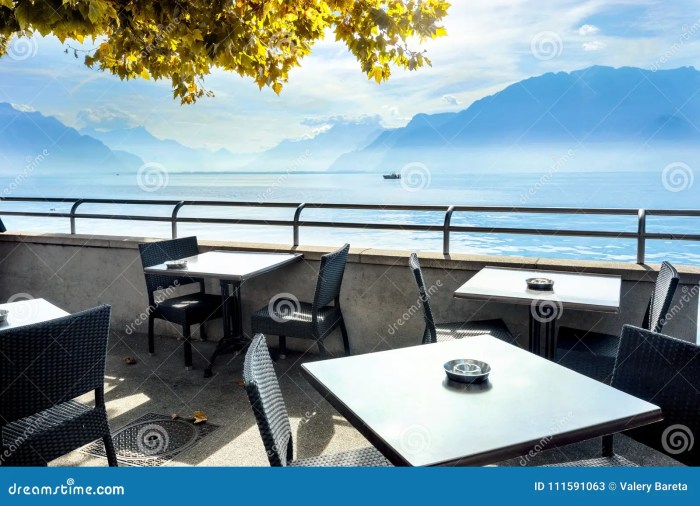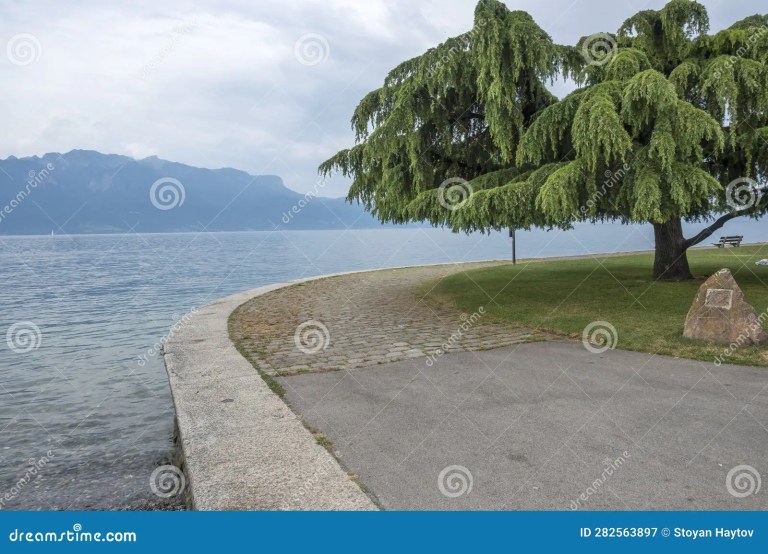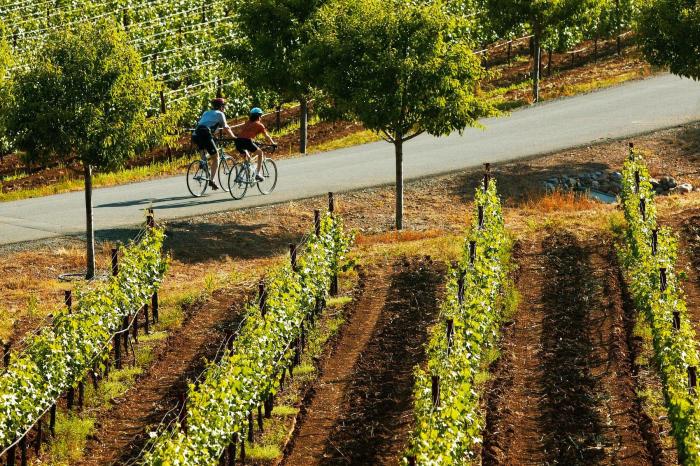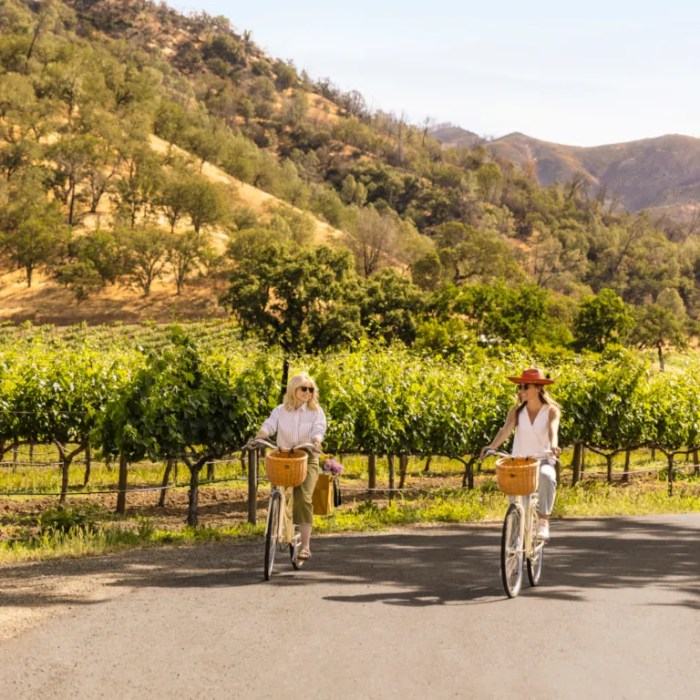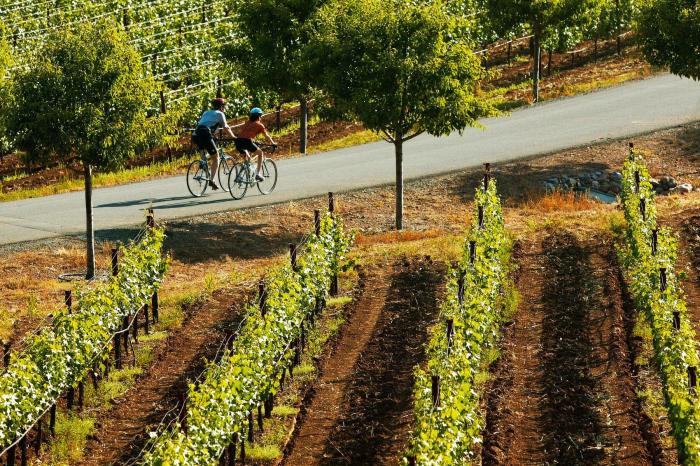Food drink what to do and eat in Genoa? This guide dives deep into the vibrant culinary scene of this Italian port city. From the freshest seafood to traditional pasta dishes, we’ll explore the historical influences, regional specialties, and diverse dining options. Discover the must-try experiences, perfect pairings, and local markets that will make your Genoese adventure unforgettable.
Genoa’s food culture is deeply rooted in its history as a major trading port. The city’s proximity to the sea is evident in the abundance of seafood dishes, a cornerstone of Genoese cuisine. We’ll also look at how the city’s rich past has shaped its culinary traditions, from historical events to trade routes.
Introduction to Genoa’s Culinary Scene

Genoa, nestled on the Ligurian coast of Italy, boasts a rich culinary heritage deeply intertwined with its maritime history. The city’s proximity to the sea has profoundly shaped its food and drink culture, making seafood a cornerstone of its cuisine. Beyond the fresh catches, Genoa offers a diverse tapestry of flavors, reflecting centuries of influences and regional traditions.
This culinary landscape ranges from simple, satisfying trattorias to elegant restaurants, catering to a broad spectrum of palates.Genoa’s culinary identity is a fascinating blend of historical influences, with traditions passed down through generations. From the early trading routes that brought spices and ingredients from afar to the modern emphasis on fresh, local produce, the city’s food scene is a vibrant expression of its history and present.
Seafood’s Significance in Genoese Cuisine
Genoa’s position as a major port city has made seafood an integral part of its culinary identity. The abundance of fresh catches, directly from the Ligurian Sea, is a defining feature of Genoese cuisine. The city’s chefs have developed a range of techniques to showcase the delicate flavors of various fish and shellfish, from simple grilled preparations to elaborate sauces.
This emphasis on seafood extends to the use of local ingredients like mussels, clams, and various types of fish, highlighting the freshness and quality of the produce.
Traditional Genoese Dishes
Genoese cuisine offers a wealth of traditional dishes, each carrying a unique story. Among the most popular are:
- Focaccia: A flatbread, often seasoned with herbs and olive oil, and sometimes topped with tomatoes, olives, or anchovies. This humble bread, a staple in many Italian kitchens, showcases the region’s appreciation for simple flavors.
- Trofie al Pesto: A pasta dish featuring trofie pasta, a unique, slightly twisted shape, coated in the vibrant pesto sauce. This dish embodies the essence of Genoese flavors, highlighting the fresh basil, pine nuts, and garlic of the Ligurian region.
- Farinata: A chickpea pancake, often served with olive oil and a variety of toppings. This dish is a testament to the local agricultural traditions and the creativity in transforming simple ingredients into satisfying meals.
- Panissa: Another chickpea-based dish, but this one is more like a thick, savory fritter. It’s often served as an appetizer or part of a larger meal. The savory flavor of panissa showcases the adaptability of chickpea flour in Genoese cuisine.
Restaurant and Cafe Scene
Genoa boasts a vibrant restaurant scene, catering to various tastes and budgets. From casual trattorias serving traditional dishes to upscale restaurants featuring innovative interpretations of Genoese cuisine, there’s a place for everyone. Cafes throughout the city offer a place to relax and enjoy a cappuccino or a light meal. This variety allows visitors to experience the city’s culinary diversity, from the authentic flavors of a traditional trattoria to the creative dishes of a modern restaurant.
Comparison of Genoese Cuisine to Other Italian Regional Cuisines
| Cuisine | Key Ingredients | Preparation Methods |
|---|---|---|
| Genoese | Seafood, fresh herbs, olive oil, chickpea flour | Grilled, pan-fried, pasta dishes with pesto, simple sauces |
| Neapolitan | Tomato sauce, mozzarella, fresh basil | Pizza, pasta dishes with tomato-based sauces, elaborate pasta shapes |
| Venetian | Seafood, rice, vegetables, fish | Risotto, seafood dishes, pasta dishes, use of fresh produce |
| Tuscan | Meat, vegetables, olive oil, beans, truffles | Stews, grilled meats, pasta dishes with simple sauces, hearty dishes |
This table offers a glimpse into the key differences in ingredients and preparation methods across Italian regional cuisines, illustrating the distinct character of Genoese culinary traditions. Each region offers its own unique approach to transforming ingredients into delicious meals.
Must-Try Food and Drink Experiences: Food Drink What To Do And Eat In Genoa
Genoa’s culinary scene extends beyond the famous pesto. From hearty pasta dishes to unique regional wines, the city offers a delightful tapestry of flavors and traditions. This section delves into the must-try experiences, exploring the distinct tastes and ingredients that make Genoese cuisine so special.
Top 5 Must-Try Food Experiences
Genoa’s culinary heritage is deeply rooted in its history as a major maritime trading port. This influenced the city’s cuisine, resulting in a blend of flavors from across the Mediterranean. The following experiences represent some of the best of Genoese food.
- Focaccia Genovese: This flatbread, a staple of Ligurian cuisine, is more than just a simple bread. It’s a testament to the region’s agricultural bounty. The focaccia Genovese is typically made with extra virgin olive oil, rosemary, and salt. Its simple ingredients combine to create a savory and satisfying experience. The texture, crispy on the outside and soft within, is perfectly complemented by the delicate flavors of the toppings.
- Trofie al Pesto: This dish epitomizes Genoese culinary pride. The trofie pasta, a unique shape ideal for catching the pesto sauce, is a testament to the region’s mastery of pasta-making. The vibrant green pesto, made with basil, pine nuts, garlic, Parmesan cheese, and olive oil, is a key ingredient. The combination of the fresh pasta and the rich pesto creates a symphony of flavors and textures.
The dish is a perfect example of how simple ingredients can create a complex and unforgettable culinary experience.
- Panisse: This chickpea fritter is a light and crispy snack that’s both delicious and healthy. The batter, made with chickpea flour, garlic, and herbs, is often flavored with spices like saffron or chili flakes. The crispy exterior and soft interior create a satisfying contrast in texture. A perfect accompaniment to a glass of local wine, panisse showcases the region’s dedication to fresh, simple ingredients.
- Seafood Platter: Genoa’s location by the sea allows for a variety of fresh seafood. A seafood platter is a must-try, featuring local catches like anchovies, sardines, and mussels. The freshness of the fish is key to a good experience. The flavors of the sea are complemented by lemon, garlic, and herbs. The vibrant colors of the seafood on the platter create a beautiful visual experience alongside the unique flavors.
- Ginestra: This traditional Genoese dish consists of small, fresh pasta shapes, often served in a rich tomato sauce with a variety of local vegetables. The dish is a celebration of the region’s seasonal produce. Its rich flavors and textures provide a hearty and comforting experience.
Genoese Pasta Dishes
Genoa boasts a rich pasta tradition. The following table Artikels some of the most common types, their preparation, and their taste profiles.
| Pasta Type | Preparation | Taste Profile |
|---|---|---|
| Trofie | Thin, twisted pasta, often served with pesto sauce | Savory, fresh, and herbaceous |
| Trenette | Flat, ribbon-like pasta, often served with pesto, seafood, or tomato sauces | Savory, light, and versatile |
| Bavette | Wide, flat pasta, typically served with pesto or meat ragu | Hearty, substantial, and rich |
| Fideuà | Thin, thread-like pasta, often served with seafood or vegetable broths | Light, delicate, and refreshing |
| Orecchiette | Small, ear-shaped pasta, often served in a creamy sauce with vegetables or meat | Hearty, satisfying, and versatile |
Local Drinks
Genoa’s local drinks showcase the region’s winemaking traditions and historical connection to the sea.
- Ligurian Wines: The region produces a variety of wines, particularly white wines, known for their refreshing acidity and crispness. The local grapes, such as Vermentino and Pigato, are integral to the wines’ unique character. The region’s unique terroir contributes to the distinct flavor profiles of these wines.
- Local Liqueurs: A variety of local liqueurs, often flavored with herbs, fruits, or spices, add to the region’s unique flavor profile. These liqueurs, such as those infused with lemon or herbs, offer unique, complex flavors that complement the region’s cuisine.
Recommended Restaurants
This table lists some recommended restaurants for each category, including price ranges and ambiance.
| Category | Restaurant | Price Range | Ambiance |
|---|---|---|---|
| Focaccia Genovese | La Taverna | Mid-range | Cozy and traditional |
| Trofie al Pesto | Trattoria al Pescatore | Mid-range | Casual and lively |
| Seafood Platter | Ristorante Porto Antico | High-range | Modern and elegant |
| Ginestra | Osteria da Enzo | Mid-range | Warm and inviting |
Food and Drink Pairings in Genoa
Genoa’s culinary scene isn’t just about delicious dishes; it’s about a symphony of flavors, textures, and aromas that harmonize perfectly. Understanding the pairings between local wines, cheeses, fruits, vegetables, and desserts unlocks a deeper appreciation for the region’s rich gastronomic heritage. This exploration delves into the art of combining these elements, revealing the secrets behind Genoa’s culinary magic.The key to a truly satisfying Genoese dining experience lies in appreciating the interplay of flavors and textures.
Matching the right wine with a specific dish, or pairing a particular cheese with a regional pasta, elevates the meal from a simple act of consumption to an exploration of culinary artistry. This section will highlight the essential connections between Genoa’s food and drink, emphasizing how thoughtful pairings enhance the overall gastronomic experience.
Genoese Wines and Regional Dishes
Genoa boasts a variety of wines, often showcasing the unique characteristics of the Ligurian terroir. A crisp, dry white wine, like a Vermentino from the Ligurian coast, is an excellent accompaniment to fresh seafood dishes like grilled fish or pesto pasta. The acidity of the wine cuts through the richness of the seafood, enhancing the flavors of the sea.
Genoa’s got amazing food and drink, from fresh seafood to delicious pasta. There are tons of quirky bars and lively squares to explore, perfect for a fun-filled trip. If you’re looking for the perfect destination for a memorable bachelor or bachelorette party, consider checking out the best destinations for these events at best bachelor bachelorette party destinations.
The vibrant atmosphere and delicious food make Genoa a great choice for a memorable celebration, regardless of the occasion.
Conversely, a robust red wine, such as a Rossese di Dolceacqua, pairs beautifully with hearty dishes like Genoese-style ragù or braised meats, its tannins complementing the richness of the ingredients.
Genoa’s got amazing seafood, but did you know you can use those frequent flyer miles or hotel points to book a fantastic safari vacation? Check out this helpful guide on how to use points to book safari vacation for some awesome tips. After all that adventure, you’ll definitely want to savor some of Genoa’s delicious street food and explore its historic alleyways.
Local Cheeses and Regional Cuisine
Genoa’s cheese-making traditions are deeply intertwined with its culinary heritage. The pungent Pecorino Sardo, often paired with Ligurian olives and bread, provides a salty, savory counterpoint to the delicate flavors of the region’s pasta dishes. The creamy texture of a local ricotta, often incorporated into sweet and savory dishes, offers a smooth contrast to the robust tastes of the meat-based sauces.
Local Fruit and Vegetable Varieties
The Ligurian climate cultivates a variety of unique fruits and vegetables. The sweet and tangy flavors of figs, often enjoyed fresh or in jams, are a perfect complement to savory dishes like focaccia or bruschetta. The vibrant, peppery taste of Ligurian peppers adds a touch of heat and complexity to regional sauces and stews, while the juicy and aromatic tomatoes, a cornerstone of Genoese cuisine, shine in pasta sauces and bruschetta.
Traditional Genoese Desserts and Their Pairings
Genoese desserts often showcase the region’s sweet side, with flavors ranging from delicate to rich. A glass of sweet dessert wine, like a Moscato d’Asti, perfectly complements the rich flavors of a traditional Genoese torta or biscotti. The delicate sweetness of a local fruit tart, like a torta di frutta, pairs well with a light, herbal liqueur.
Suggested Food and Drink Pairings
| Dish | Wine/Beverage | Flavor/Texture Profile |
|---|---|---|
| Grilled Fish with Lemon | Vermentino | The acidity of the wine cuts through the richness of the fish, enhancing the lemon flavor. |
| Genoese Ragù with Pasta | Rossese di Dolceacqua | The tannins of the wine complement the richness of the ragù, balancing the flavors. |
| Focaccia with Figs | Sweet Dessert Wine (e.g., Moscato d’Asti) | The sweetness of the figs is balanced by the wine’s sweetness and acidity. |
| Ricotta-Filled Ravioli | Light-bodied white wine | The creaminess of the ravioli is enhanced by the light acidity of the wine. |
| Fruit Tart | Herbal Liqueur | The delicate sweetness of the tart is balanced by the herbal notes of the liqueur. |
Local Markets and Food Tours
Genoa’s vibrant food scene extends beyond restaurants. Immerse yourself in the heart of the culinary culture by exploring the city’s bustling local markets and engaging in enriching food tours. These experiences offer a unique perspective on the region’s traditions and provide a chance to interact directly with producers. You’ll discover fresh, seasonal ingredients and gain a deeper understanding of the local foodways.Delving into Genoa’s local markets and participating in food tours is a crucial step in experiencing the city’s gastronomic heritage firsthand.
The markets provide a glimpse into the daily life of Genoese people, showcasing the abundance of fresh produce, seafood, and artisanal products. Food tours, expertly led by local guides, offer more than just a meal; they provide a historical and cultural context, revealing the stories behind the food and the passion of the producers.
Local Markets: A Window into Genoa’s Food Culture
Genoa boasts a network of vibrant local markets, acting as vital community hubs and showcasing the region’s agricultural bounty. These markets are not merely places to buy food; they are lively social spaces where locals gather, and the atmosphere is infused with the energy of the city.The markets offer a wide array of fresh produce, including seasonal fruits and vegetables, known for their exceptional quality and flavor.
Seafood stalls display a dazzling array of catches, from the freshest fish of the day to locally sourced shellfish. A variety of cheeses, cured meats, and artisan breads are also prominently featured. You’ll find artisanal products, like local honey, olive oil, and sauces, showcasing the region’s culinary prowess.
Types of Food and Drink Available at Local Markets
The diverse offerings at Genoa’s markets reflect the region’s rich agricultural heritage and maritime traditions. The stalls overflow with fresh produce, displaying the abundance of seasonal fruits and vegetables.
- Fresh Produce: Seasonal vegetables, fruits, and herbs like basil, oregano, and rosemary are abundant, reflecting the local climate and growing conditions. The freshness of the ingredients is unmatched, ensuring the best flavor and nutritional value.
- Seafood: The bustling fish markets showcase a remarkable variety of freshly caught seafood. The quality and freshness are a testament to the vibrant fishing industry. From sardines and anchovies to larger catches like sea bass and tuna, the selection is impressive.
- Artisan Products: The markets also offer a selection of artisan-made products. These include local cheeses, cured meats, olives, and a variety of artisan breads. The quality and taste of these products highlight the dedication of local producers to preserving traditional methods.
Best Local Food Tours in Genoa
Genoa offers a range of food tours, catering to diverse interests and budgets. These tours provide an engaging and informative experience, allowing you to explore the city’s food scene in a unique way. A skilled guide can provide insights into the history and cultural significance of the foods, adding a layer of depth to the experience.
- Genoese Food Tour: This tour explores the city’s diverse culinary landscape, featuring stops at local markets, artisan workshops, and family-run eateries. The tour provides a taste of traditional Genoese cuisine and its history, emphasizing the importance of fresh ingredients and local traditions.
- Food and Wine Tour: This tour focuses on the pairing of local wines with traditional dishes. The experience allows you to understand the complex relationship between the flavors of food and drink in the region, showcasing the best of Genoa’s culinary artistry.
Comparing Genoa Food Tours
| Tour | Duration | Cost | Activities |
|---|---|---|---|
| Genoese Food Tour | 3-4 hours | €40-€60 per person | Visits to local markets, artisan workshops, and family-run restaurants |
| Food and Wine Tour | 2-3 hours | €50-€70 per person | Focus on wine pairings, including visits to wineries and tastings |
Best Time to Visit Local Markets
For the freshest produce and the most vibrant atmosphere, visiting the local markets in Genoa is best during the early morning hours. This is when the stalls are brimming with the freshest catches and seasonal produce.
Street Food and Snacks
![[100+] Food 4k Wallpapers | Wallpapers.com Food drink what to do and eat in genoa](https://travelingtours.info/wp-content/uploads/2025/06/food-4k-spdnpz7bhmx4kv2r-1.jpg)
Genoa’s vibrant street food scene is a testament to the city’s rich culinary heritage. From savory pastries to fresh seafood delights, these portable treats offer a taste of local life and traditions, often enjoyed while strolling through the city’s bustling piazzas and along its charming streets. These offerings are an integral part of the Genoese experience, providing affordable and accessible sustenance.The cultural significance of street food in Genoa is undeniable.
It’s a way for locals and tourists alike to connect with the city’s spirit, savoring flavors that have been passed down through generations. Street food vendors are often found in bustling market areas, creating a lively atmosphere and adding to the sensory experience of exploring the city.
Popular Street Food Options
Genoa’s street food repertoire is diverse, reflecting the city’s history and its proximity to the sea. Savory pastries, fresh seafood, and hearty regional specialties are common. These culinary gems offer a glimpse into the region’s culinary traditions.
- Focaccia: A staple in Ligurian cuisine, focaccia is a flatbread that can be topped with various ingredients, including rosemary, olives, or cheese. The simple dough is baked until golden brown, creating a crispy exterior and a soft interior. This is a perfect example of a basic, versatile street food.
- Farinata: This chickpea-flour pancake is a popular choice, often served with fresh tomatoes, olives, or pesto. Its origins lie in the region’s historical reliance on local ingredients, creating a uniquely Genoese flavor profile. Farinata is a testament to the region’s commitment to simplicity and quality.
- Panino: Genoa’s street food includes diverse paninis, reflecting the city’s varied influences. These sandwiches feature fillings like cured meats, cheeses, or vegetables. A panino is a great way to experience the flavors of Genoa, in a portable and convenient way.
- Seafood Specialties: Given Genoa’s location, fresh seafood is a must-try. From fried seafood like calamari and shrimp to simple grilled fish, the flavors are often enhanced by local herbs and spices. This demonstrates how the sea influences Genoa’s street food offerings.
Preparation Methods and Ingredients
Street food vendors in Genoa employ diverse preparation methods. From simple grilling to baking, the techniques are often tailored to maintain freshness and quality. The ingredients used are primarily local and seasonal, ensuring a connection to the city’s agricultural heritage.
- Simple Preparation: Many street foods, like focaccia and farinata, are prepared quickly and easily using simple techniques. This ensures that the street food is easily available and affordable. This reflects the importance of accessibility in street food culture.
- Fresh Ingredients: The use of fresh, local ingredients is crucial to the quality and flavor of the street food. This practice reflects the commitment to quality and freshness, ensuring a truly authentic Genoese experience.
- Seasonal Variations: The availability of ingredients can vary based on the season. This creates a dynamic street food scene, where vendors adapt to what is fresh and in season, further enriching the experience.
Incorporating Street Food into Your Experience
Street food provides a wonderful opportunity to immerse yourself in the local culture. It offers a chance to experience Genoese life at a more intimate level, allowing you to discover hidden gems and savor the flavors that define the city.
- Markets: Explore local markets, where you can often find vendors offering a variety of street food. This is a perfect opportunity to experience the atmosphere and purchase a variety of options.
- Picnics: Pack some street food to enjoy in a park or along the harbor. This creates a relaxing way to enjoy the flavors of Genoa.
- Pairing with Drinks: Consider pairing your street food with local beverages, such as Ligurian wine or a refreshing glass of water. This enhances the overall dining experience.
Street Food Tasting Table
| Food | Description | Taste | Origin |
|---|---|---|---|
| Focaccia | Flatbread, various toppings | Savory, crispy | Ligurian |
| Farinata | Chickpea pancake | Earthy, savory | Ligurian |
| Panino | Sandwich | Diverse, depending on filling | General Italian |
| Fried Seafood | Calamari, shrimp, etc. | Crispy, fresh seafood | Genoa (coastal region) |
Genoa’s Culinary History
Genoa’s culinary scene, vibrant and complex, reflects centuries of history, shaped by its strategic location and bustling trade routes. From humble beginnings to sophisticated dishes, the city’s food has evolved alongside its people, absorbing influences from far-flung corners of the world. This rich tapestry of flavors and traditions reveals a fascinating story of cultural exchange and culinary innovation.The Genoese diet has been deeply intertwined with the city’s maritime history.
Early Genoese cuisine relied heavily on readily available seafood, influenced by the surrounding Ligurian Sea. Over time, trade routes brought new ingredients and techniques, transforming the local palate and creating a distinctive culinary identity.
Historical Influences on Genoese Cuisine
Genoa’s location at the heart of Mediterranean trade routes played a crucial role in shaping its cuisine. The city served as a vital hub for maritime commerce, connecting it to diverse cultures and regions. This constant influx of new ingredients and cooking methods, coupled with the city’s long-standing fishing traditions, led to a unique culinary amalgamation.
Key Figures and Periods Shaping Genoese Food Culture
The Republic of Genoa, a powerful maritime republic, thrived during the Middle Ages and Renaissance. This period saw the rise of a prosperous merchant class, who often hosted lavish banquets showcasing their wealth and social standing. These feasts likely incorporated ingredients from across the Mediterranean, further enriching the local culinary landscape.
Evolution of Food Preparation Techniques
The evolution of food preparation techniques in Genoa mirrored advancements in technology and societal shifts. The adoption of new cooking methods, such as the use of ovens and specialized cooking tools, alongside evolving agricultural practices, allowed for greater culinary exploration and innovation. The use of local herbs and spices also became increasingly important, adding depth and complexity to Genoese dishes.
Major Historical Events and Their Impact on Genoese Cuisine
| Historical Event | Impact on Cuisine | Associated Dishes (Examples) |
|---|---|---|
| Rise of the Republic of Genoa (Medieval Period) | Increased trade led to a greater variety of ingredients and cooking techniques. Wealthy merchants hosted elaborate feasts, further enriching the culinary landscape. | Rich stews with imported meats and spices; seafood dishes prepared with elaborate sauces. |
| The Great Famine of 1315-1317 | Scarcity of food likely led to the development of dishes using readily available ingredients like legumes and root vegetables, with greater emphasis on practicality and sustainability. | Vegetable-based soups and stews; simple pasta dishes with local vegetables. |
| Genoese Colonization of the Mediterranean | Trade and interaction with other cultures brought new ingredients and cooking styles to Genoa, influencing local recipes. | Dishes incorporating ingredients like olives, almonds, and various herbs from different regions; new spices and methods of preserving food. |
| The Renaissance (14th-16th Centuries) | Increased prosperity and cultural exchange fostered innovation in food preparation and presentation. | Elaborate pasta dishes; rich sauces made with various meats and vegetables. |
Vegetarian and Vegan Options in Genoa
Genoa, a city steeped in culinary tradition, offers a surprisingly vibrant scene for vegetarians and vegans. Beyond the classic Ligurian seafood dishes, Genoa’s restaurants are increasingly accommodating diverse dietary needs, reflecting a growing awareness and appreciation for plant-based cuisine. This evolving landscape presents a fantastic opportunity to experience the region’s fresh produce and innovative culinary creations.
Restaurants with Vegetarian and Vegan Options
Genoa boasts a growing number of restaurants specifically catering to vegetarians and vegans, offering diverse and delicious options. These establishments often feature menus designed to showcase the versatility of local ingredients, creating exciting and satisfying meals for those following plant-based diets. Exploring these restaurants reveals a commitment to high-quality ingredients and creative culinary interpretations.
Types of Vegetarian and Vegan Dishes
The variety of vegetarian and vegan dishes in Genoa is impressive. Expect to find a range of pasta dishes featuring fresh vegetables, hearty salads with locally sourced greens, and flavorful vegetable-based risottos. Many restaurants also create vegan interpretations of traditional Genoese dishes, using innovative techniques to capture the essence of the region’s culinary heritage. For example, many restaurants offer vegan versions of pesto, a staple of Ligurian cuisine, using creative combinations of vegetables and herbs.
Quality and Variety of Vegetarian and Vegan Food, Food drink what to do and eat in genoa
The quality of vegetarian and vegan food in Genoa is generally excellent. Restaurants often prioritize fresh, seasonal produce, showcasing the region’s abundance of vegetables, fruits, and herbs. The variety extends beyond the typical fare, including inventive and creative dishes that satisfy both the palate and the need for dietary restrictions. This emphasis on fresh ingredients ensures that the flavors are vibrant and authentic, offering a unique dining experience.
Availability of Fresh Produce and Ingredients
Genoa’s vibrant local markets are a treasure trove for vegetarians and vegans. Fresh produce, including an array of colorful vegetables, herbs, and fruits, is readily available, providing the foundation for delicious and nutritious dishes. The strong connection to local agriculture ensures the availability of high-quality ingredients, making it easy to find the freshest produce for preparing flavorful vegetarian and vegan meals.
Vegetarian and Vegan-Friendly Restaurants
| Restaurant Name | Menu Suggestions |
|---|---|
| La Taverna del Borgo | Extensive pasta dishes with seasonal vegetables, salads with locally sourced greens, and hearty vegetable-based risottos. |
| Il Giardino Segreto | Vegan interpretations of classic Genoese dishes, including pesto variations, fresh pasta dishes with seasonal vegetables, and creative salads. |
| Ristorante Flora | A wide range of vegetarian and vegan options, including vegetable-based pizzas, gourmet salads, and hearty lentil soups. |
| Osteria del Vigneto | Hearty lentil soups, fresh pasta dishes with seasonal vegetables, and various salads with local produce. |
These are just a few examples of the many vegetarian and vegan-friendly restaurants in Genoa. The city offers a diverse culinary scene, ensuring that there are options to suit various tastes and dietary needs. Further research and exploration are encouraged to discover more hidden gems.
Genoa’s got amazing seafood, fresh pasta, and vibrant markets to explore! If you’re planning a trip and looking for a great deal on a Langham hotel for your stay, check out the Langham hotels Black Friday/Cyber Monday discount. You can snag a fantastic rate and still have plenty of budget left to try out the local cuisine and experience the best of Genoa’s culinary scene.
Tips for Planning a Culinary Adventure in Genoa
Genoa’s vibrant food scene offers a delicious journey through Italian cuisine. From bustling markets to intimate trattorias, experiencing Genoa’s culinary delights requires careful planning. This section provides practical advice on navigating the city’s food landscape, maximizing your food tour and market experiences, and managing your budget effectively.Planning a culinary adventure requires more than just knowing where to eat. It’s about understanding the rhythm of the city, the best times to find the freshest ingredients, and how to savor each experience without breaking the bank.
This comprehensive guide provides the tools to create a memorable and affordable culinary adventure in Genoa.
Navigating Genoa’s Food Scene
Genoa’s food scene is best explored with a blend of spontaneity and planning. Knowing the best areas to explore will enhance your experience. The historic center, with its narrow streets and hidden gems, often offers authentic trattorias serving traditional Ligurian dishes. The newer neighborhoods, while offering a mix of cuisines, might provide a different culinary perspective. Consider your interests and preferences when selecting neighborhoods to explore.
Maximizing Food Tours and Market Visits
Food tours and market visits are fantastic ways to immerse yourself in Genoa’s culinary culture. Pre-booking tours, especially during peak season, ensures availability and allows you to select tours that cater to your specific interests (e.g., seafood, local delicacies). Market visits offer an authentic taste of the local produce and culinary traditions. Arriving early allows you to browse the stalls and discover fresh ingredients, often at more affordable prices.
Optimal Times for Restaurant and Market Visits
Restaurant reservations are highly recommended, especially for popular trattorias. Lunchtime, from 12:00 PM to 2:00 PM, and dinner, from 7:00 PM to 9:00 PM, are peak dining hours. Markets, particularly the fish market, often operate during specific times. Check opening hours in advance to avoid disappointment. The early morning hours at markets can yield the freshest produce and seafood, while the late afternoon offers a chance to sample local snacks and street food.
Budgeting for Food and Drink Experiences
Genoa offers diverse dining options, catering to various budgets. Budget-friendly trattorias often feature set menus or platters, while more upscale restaurants provide exceptional dining experiences. Consider a balance of affordable and more expensive meals to enjoy the full spectrum of Genoa’s culinary scene. Factor in costs for food, drinks, transportation, and potential entrance fees to markets.
Tips for Saving Money on Food in Genoa
| Tip | Description | Example |
|---|---|---|
| Meal Planning | Create a basic meal plan for each day to avoid impulsive, higher-priced choices. | Choose a pasta dish at a local trattoria for lunch and have a light snack from a market stall for dinner. |
| Embrace Street Food | Street food is a budget-friendly way to experience local flavors. | Try focaccia, pesto sandwiches, or local pastries. |
| Take Advantage of Set Menus | Many trattorias offer set menus, which are often more affordable than ordering à la carte. | Look for “menu del giorno” or similar options. |
| Water from the Tap | Genoa’s tap water is safe to drink. Avoid bottled water to save money. | Bring a reusable water bottle to fill up at the tap. |
| Local Markets | Buy fresh produce and ingredients at local markets for cooking. | Purchase vegetables and seafood to prepare your own meals. |
Planning your meals and snacks in advance can significantly reduce food costs and allow you to maximize your culinary experiences.
Final Conclusion
Genoa’s food and drink scene offers a unique blend of tradition and modernity. From the bustling local markets to the refined restaurants, there’s something for every palate. This exploration provides insights into the city’s rich culinary history, highlighting the must-try dishes, perfect pairings, and local markets. Whether you’re a seasoned foodie or a curious explorer, this guide will inspire your next culinary adventure in Genoa.







